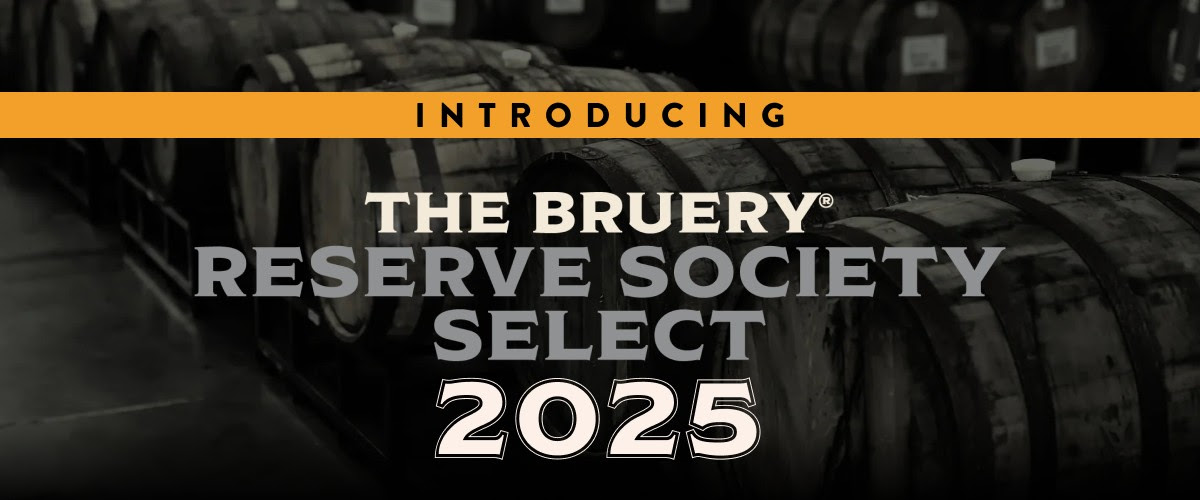
From The Bruery:
It's the end of May, our 5th anniversary month, so we're finishing off the month of barrel blogs with a focus on the barrel industry itself and some thoughts on French American Oak! This time we went straight to the source (of barrels) and chatted with Kelvin Cooperage to learn about French oak. We just wish there was a way we could explain online how delightful Kevin McLaughlin's Scottish accent is over the phone.
Although our variation of Bois aged in French oak barrels will not be ready until late this year and it is available exclusively to our Hoarders Society members, our bourbon barrel aged Bois is available nationwide to the public right now. As we've mentioned, the rye, brandy, and new American oak barrel aged variations are available exclusively to our Society members.
Started in 1963 by Ed McLaughlin in Scotland, Kelvin Cooperage has been supplying distilleries and breweries with new, used and repaired barrels. Operated by his sons Kevin and Paul, the company is currently based in Kentucky with approximately 70,000 barrels onsite at their command. (Whoa)
Both Kevin and Paul grew up in Scotland where their father owned a small cooperage that repaired barrels for the whiskey industry. At age 16, Kevin started an apprenticeship repairing barrels as a journeyman cooper (which means not yet master level), before his family moved to southern California. As the family business slowed down, he decided to go back to school, managed to get a golf scholarship at Pepperdine University and landed a sales job. He realized after three years it was time to breathe some new life into the family business. The manager of the business was on his way out anyway, so Kevin headed back to Scotland to take over.
But, he hated the weather in Scotland. "It's too cold. It's freezing, miserable! And scotch whisky was on the decline," Kevin explained. Kelvin Cooperage moved to Kentucky in 1991 and has grown from 4-5 employees with about 20,000 barrels to about 60 employees, shipping about 40,000 barrels a year with 70,000 onsite at their 9 acre space! "We've been fortunate in that we've diversified with different markets and products. We make all types of barrels. A lot of places make new barrels for wine, but we're the only one doing new, used, and repairs. I really don't have a lot of options in life so I'm stuck with this," he laughs. 
When it comes to barrels in the beer industry, Kevin has noticed their clientele has gone from "one beer customer out in Oregon" to now projecting 5% of their business for 2013 coming from the beer industry. "The beer guys are becoming more aware of what the barrel can do for beer," he noticed. "What the beer guys are doing is incredible, and we can offer anything in barrels. We want to be that call for experimentation." So in other words, Kevin likes to make it weird, which is great news for us, because we can't seem to just let a beer be "normal". 
We've aged Bois in French Oak barrels from both Kelvin Cooperage and Tonnellerie de Mercurey and Patrick and the crew have found notes of marshmallow and tropical fruit, musty wood, and some spicyness so far, but these barrels still have a while to hang out before this beer is done. Compared to new American oak barrels (some of which we also got from Kelvin, at a medium-plus toast level for all you supergeeks) which had more tannic flavors and notes of charred wood and burnt caramel, it seems like the French oak provided some softer and more aromatic flavors .... so far. Differences in flavor could possibly be attributed to the type of oak used and where it was sourced from in France. As you can see on this handy map, there are a lot of options for where to source French oak. 
Kelvin's Director of Production & Quality Control, William Hornaday, filled us in on his French oak barrel and wood aging thoughts.
Both American and French Oak can impart similar flavors just depending on the preparation of the wood and barrel. French oak will contribute more flavor in less time than American oak because French oak is less dense making it easier for [liquid] to move in and out of the wood. Toast level is the biggest factor to flavor and depending on the toast level you will get a large range in flavor. Fresh oak, vanilla, caramel, butterscotch, almond, smoky, woody, spicy, cinnamon, etc. Those flavors are listed in order from light toast moving up to a heavy toast.
Most wood aged beer is made in a used bourbon barrel which will impart heavy flavors from the product that filled the barrel first: bourbon! You will still get smoky, woody, and mocha characteristics as well from the barrel. Those flavors will be much more prominent in a new barrel than a used one.
For those Society members looking to try some of the Bois variations, on Saturday 6/1 we'll be offering 5 oz pours of the new American oak and brandy barrel aged variations for $7 each staring at noon. Pours are limited to one per person and will be available until we run out!

Read more about cooperage and the differences between French and American oak at these stellar resources:









0 comments (click to read or post):
Post a Comment
Please leave a comment...I do moderate each comment so it may not appear immediately...and please be nice! You can also comment using Disqus (below) or even comment directly on Facebook (bottom).